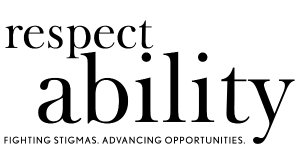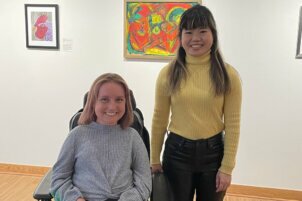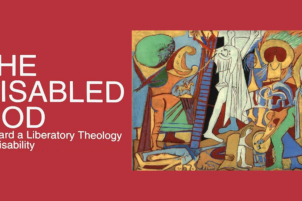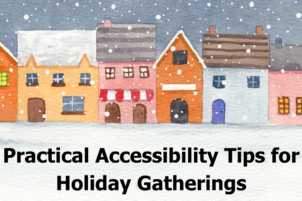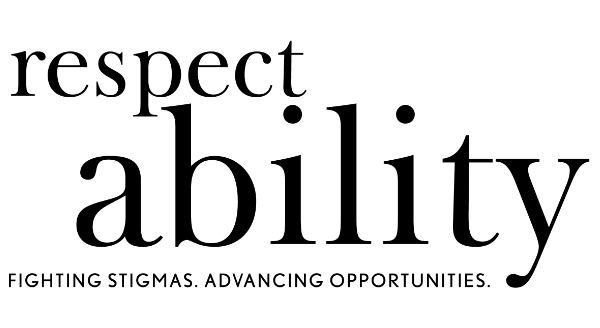As we head into Shabbat, I wanted to offer some highlights from Tuesday’s 5th session of our Disability Access and Inclusion Training Series for Jewish Organizations, “How to Ensure a Welcoming Lexicon, Accessible Websites and Social Media and Inclusive Photos.”
An organization’s website, in today’s digital world, can be seen as its front lobby – and, given that many physical office buildings are closed right now, most connecting between the public and organizations takes place online, making it our only front door. This webinar addressed how to open that door for everyone.
Our expert panelists – Tatiana Lee, Hollywood Inclusion Associate at RespectAbility; Sharon Rosenblatt of Accessibility Partners; and River McMican of Keshet – offered key recommendations for making our digital platforms welcoming to people with disabilities. Here are some points they offered:
Actions speak louder than words
When it comes to diversity and inclusion in the workplace, practice what you preach: your communications should show the evidence of your commitment. Ensure that all of your promotional and recruitment materials reflect the desired diversity of your workplace. Your website, publications and other materials should, when they use pictures, include authentic photos of people with disabilities, as well as individuals of all races, genders and backgrounds. Furthermore, as McMican highlights, “people with disabilities aren’t interchangeable, [so] don’t use an image of one person with a disability to represent all people with disabilities.” Also, try to have multiple images, not just one continually reused photo.
Pass the mic
“Communication is about storytelling,” McMican highlighted. When you tell the stories of a broad, reflective population – you welcome that population into your community. By sharing their voices and faces, you tell them they are heard and seen. If you realize the story of a population you want to serve is, such as people with disabilities, missing, it shows that they may not be fully incorporated into your team and your community. It is that important, McMican suggests, to “actively seek out and hire people with disabilities and other groups you wish to serve [in your community] to share their stories.”
Discussing disability
The language that we use to speak about disability is very important. The word “disability” is not a bad word, and should be embraced, without making disability the focus of the story. Instead, the story should center on the person and what they are doing. The word “nondisabled” should be used instead of “able-bodied” or “normal.” Avoid euphemisms like “differently-abled” and depictions that unduly stigmatize disability, by saying, “wheelchair user” instead of wheelchair-bound, or “has cerebral palsy” rather than “suffers” from it.” Additionally, person-first language, which puts the emphasis on the person first, followed by a description of the disability, should generally be used over identity-first language, which puts the emphasis on the disability – unless the person at the center of the story says otherwise.
Make your efforts accessible
Along with the message, the medium must be accessible. To be truly inclusive of people with disabilities, you have to make sure all the wonderful materials and stories you are putting out are accessible. Including a photo of an employee who is blind on your website won’t mean much, for instance, if that photo is not screen-reader accessible.
Sharon Rosenblatt and Tatiana Lee both gave really actionable guidance on making websites and social media more accessible using alt-text, image descriptions, captions, colors and descriptive links, to name a few. This builds on a prior webinar, where Rebecca Wanatick of MetroWest ABLE, Lauren Appelbaum of RespectAbility, and Dori Kirshner of Matan share how to make virtual – and eventual in-person events – accessible, and ways to create a culture of accessibility in event planning.
These are only the highlights: to learn more, visit our website to view the transcripts and fully accessible PowerPoints from this and earlier webinars, as well as many other online resources. The most recent webinar will be online early next week; as mentioned by Tatiana Lee during the training, these webinars have their open captions applied manually (by yours truly), and so will need time to go up.
The series is on hiatus next week so you can join us in our #ADA30 Summit 2020, celebrating the 30th anniversary of the ADA Following the conference, we will finish out our amazing series with our last two webinars:
Tuesday, August 4 – “How to Create and Implement Successful Diversity and Inclusion Initiatives”
Tuesday, August 11 – “How to Ensure Legal Rights and Compliance Obligations”
As always, you can register for them at https://www.respectability.org/jewish-events and we encourage you to share the series with anyone whom you think will be interested in including Jews with disabilities.
We hope to see you there! Thank you and Shabbat Shalom!
Lily Coltoff
Communications Fellow/Jewish Inclusion Fellow
RespectAbility
